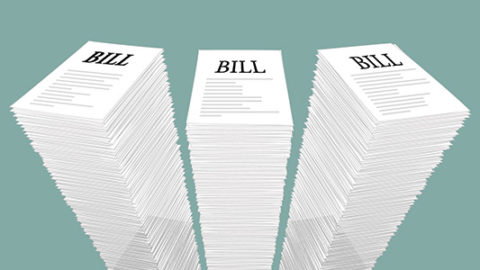What the Texas Ruling on the No Surprises Act Means for Employers
AUTHORS
 Shawn Gremminger
Shawn Gremminger
Director, Health Policy

Director, Health Policy

TOPLINES
Health care providers have sued the Biden Administration over implementation guidance for the No Surprises Act in at least six district courts around the country. Last week, a federal district judge in Tyler, TX was the first to rule on one of the cases and sided with plaintiffs – the Texas Medical Association– effectively upending a vital portion of the rule implementing the decision.
At issue are two questions:
- First, did the administration make a mistake by finalizing a rule using an abbreviated process, known as an interim final rule, rather than the longer traditional rulemaking process?
- Second, did the administration go wrong in how it crafted its instructions to arbitrators when settling payment disputes between providers and health plans? Georgetown University health law professor Katie Keith provides a detailed legal analysis in Health Affairs.
What does this all mean for employers and purchasers? Here, the short, medium and long-term consequences.
Short-Term Consequences
The law’s rules implementing the independent dispute resolution (“arbitration”) process went into effect March 1, 2022. The Texas Medical Association ruling goes into effect immediately and has nationwide impact. Even if other district courts rule in favor of the Administration, this decision will remain in place until overturned on appeal or until the Administration produces a new implementing rule under the formal rulemaking process.
The most notable short-term impact of the rule will likely be wide variation in arbitration outcomes. The rule provided detailed and specific guidance to arbitrators on how to weigh various factors in resolving payment disputes. That guidance sought both to anchor arbitration decisions around the market rate for services (known in the rule as the “median contracted rate”) and to provide all parties with predictability, minimizing variation in arbitration outcomes. With that section of the rule vacated, each individual arbitrator will have to exercise their own judgment in weighing factors as disparate as the market payment rate, training and experience of the clinician, teaching status of the facility and whether the participants engaged in good faith efforts in resolving a payment dispute.
The upshot for employers: Expect wide and unpredictable variation in outcomes from surprise billing arbitration.
Medium-Term Consequences
The lack of predictability in arbitration decisions will likely lead to a greater use of arbitration as parties seek to identify which arbitrators are likely to rule in their favor and which factors most impact arbitration decisions. The proliferation of arbitration will increase administrative costs for all parties, most of which will be directly or indirectly passed onto employers and purchasers. The opposite would be true if a more predictable IDR process had remained in place. While its reasonable to expect some initial testing of arbitration by providers, once a pattern of decisions emerges, the incentive for both parties will be to settle payment disputes before arbitration rather than go forward with a costly and burdensome arbitration process.
The upshot for employers: Expect a significant number of surprise billing claims to go to arbitration, rather than be settled outside of arbitration.
Long-Term Consequences
Nearly half the states in the country implemented surprise billing protections before enactment of the federal No Surprises Act, though these state laws do not impact ERISA plans –the vast majority of large employer plans — which are regulated strictly at the federal level. The state-level experience shows the importance of the instructions provided to arbitrators and how those decisions impact long-term cost growth.
Laws enacted in New York, New Jersey and Texas direct arbitrators to consider the offer submitted by the party closest to the 80th percentile of billed charges (already a highly inflated figure). Not surprisingly, early data indicate that arbitration is leading to very high payments to out-of-network providers. In New Jersey, median arbitration decisions are more than five times the market rate for services in the state. In Texas, where state law was implemented more recently and data is less available, the Texas Medical Association reports that the use of arbitration was significantly higher in 2021 than in 2020, a likely indication that providers are finding that going to arbitration results in higher profits than settling payment disputes before arbitration, or going in-network. To entice physicians to go in-network, health plans will have to substantially increase the market rate for services by the types of providers most likely to engage in surprise billing – emergency physicians, anesthesiologists, and pathologists.
The upshot for employers: If arbitration decisions tend to favor providers, expect to pay significantly more for certain providers to go in-network.
The Bottom Line
While the ultimate impact will depend significantly on how arbitrators tend to decide arbitration claims, unless the Texas Medical Association ruling is overturned or removed by future rulemaking, the likely impact is higher costs for employers, employees and their families.
An arbitration system that fails to anchor decisions around the market rate will likely lead to more decisions being made in favor of providers with offers well above the market rate, and those decisions will lead to substantially enhanced leverage for providers in contract negotiations. Why go in-network at market rates, when you can stay out of network and achieve significantly higher prices through arbitration?
To cope with this dysfunctional system, self-insured employers will be forced to increase their own in-network payment rates for specialties capable of surprise billing, driving up costs and ultimately harming employees and their families.



